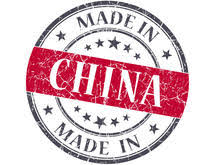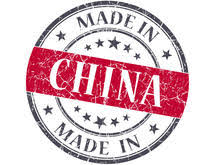
For mainland Chinese companies, the road to internationalization and entering into the homes of people outside of their home market so that they could become international household names, has been rocky to say the least. Most of such companies, from Haier to Huawei, were already established in their home market.
But that trend, according to many, is all set to undergo a change.
"I think we're seeing it starting to evolve now," Scott Kronick, Asia Pacific president and CEO of Ogilvy Public Relations, said.
According to Kronick, the acquisition of IBM by the Chinese computer making giant Lenovo in 2005 was perhaps the infliction point for Chinese companies looking to internationalize, despite the fact that China tended to depend on branding and communication to a much lesser degree in reaction to its efforts to accumulate resources during the late 1990s.
"When you saw that happen, ... all the Chinese companies were saying they want to do a Lenovo. They want to go and make world news by acquiring a major business, like the IBM PC business," Kronick said.
And according to the PR executive, one of the other reasons for the change of attitude towards the brands from China’s mainland was that the Chinese corporates were more willing to gain a better understanding about consumers in overseas markets compared to earlier years when they just blindly applied the existing business models for foreign markets.
For some companies, the strategy to stand out from the competitors has been to strike up partnerships with more well-established brands and names. Huawei, partnering with the ace camera maker Leica to jointly develop products for several of its smartphone models so that the brand is able to appeal to the high market consumer segment, despite the Chinese company investing heavily itself in its research and development and marketing, is one such example.
"I think those partnerships are very important to brands like Huawei and Oppo. Absolutely. I think anything that will raise the waters of those brands, that's very, very important," Kronick said.
According to Millward Brown's annual report on the most valuable global brands, many of the Chinese brands are slowly making it towards the top and climbing in the brand value list even though he U.S. is the country which accounts for the majority of the top brands in the world. one statistic would put things to perspective. While there was just one Chinese company in the list of the top 100 global brands that were based in China in 2005, in 2017, there were 13 Chinese owned companies that had made the list.
"It takes time. I mean, these brands are not built overnight ... Every single bit of communication builds onto that," Kronick said
(Source:www.cnbc.com)
But that trend, according to many, is all set to undergo a change.
"I think we're seeing it starting to evolve now," Scott Kronick, Asia Pacific president and CEO of Ogilvy Public Relations, said.
According to Kronick, the acquisition of IBM by the Chinese computer making giant Lenovo in 2005 was perhaps the infliction point for Chinese companies looking to internationalize, despite the fact that China tended to depend on branding and communication to a much lesser degree in reaction to its efforts to accumulate resources during the late 1990s.
"When you saw that happen, ... all the Chinese companies were saying they want to do a Lenovo. They want to go and make world news by acquiring a major business, like the IBM PC business," Kronick said.
And according to the PR executive, one of the other reasons for the change of attitude towards the brands from China’s mainland was that the Chinese corporates were more willing to gain a better understanding about consumers in overseas markets compared to earlier years when they just blindly applied the existing business models for foreign markets.
For some companies, the strategy to stand out from the competitors has been to strike up partnerships with more well-established brands and names. Huawei, partnering with the ace camera maker Leica to jointly develop products for several of its smartphone models so that the brand is able to appeal to the high market consumer segment, despite the Chinese company investing heavily itself in its research and development and marketing, is one such example.
"I think those partnerships are very important to brands like Huawei and Oppo. Absolutely. I think anything that will raise the waters of those brands, that's very, very important," Kronick said.
According to Millward Brown's annual report on the most valuable global brands, many of the Chinese brands are slowly making it towards the top and climbing in the brand value list even though he U.S. is the country which accounts for the majority of the top brands in the world. one statistic would put things to perspective. While there was just one Chinese company in the list of the top 100 global brands that were based in China in 2005, in 2017, there were 13 Chinese owned companies that had made the list.
"It takes time. I mean, these brands are not built overnight ... Every single bit of communication builds onto that," Kronick said
(Source:www.cnbc.com)














